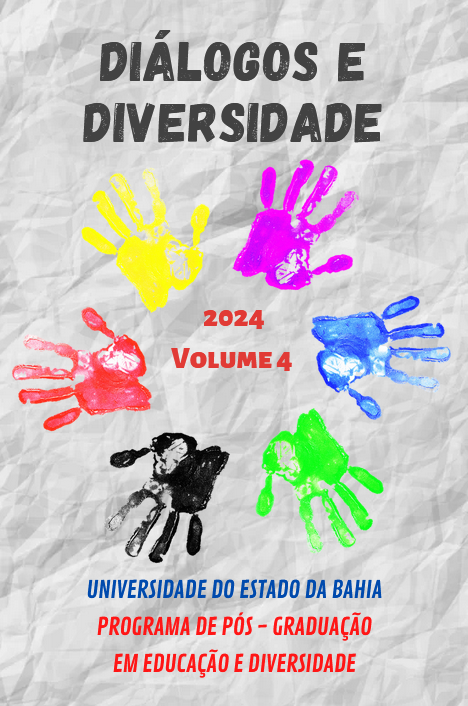SHARED STORYBOOK READING IN STUDENTS WITH CEREBRAL PALSY WHO USE AUGMENTATIVE AND ALTERNATIVE COMMUNICATION
Keywords:
Shared reading, Cerebral palsy, Augmentative and Alternative CommunicationAbstract
The purpose of this article is to analyze scaffolding strategies in shared storybook reading with students who have cerebral palsy and use Augmentative and Alternative Communication Systems (AACS). Based on the sociocultural theory of learning, the study emphasizes the importance of scaffolding in cognitive development. The background highlights the relevance of co-constructive narrative strategies for children with disabilities who use AACS. The research, conducted at a specialized education center in Uruguay, revealed the application of various scaffolding strategies, such as open-ended questions and written references, primarily aimed at low levels of semantic complexity. The findings support the premise that shared storybook reading can be an effective resource for promoting language development and literacy in these children. Additionally, the importance of scaffolding strategies to guide children's participation and assist them in understanding more complex concepts is emphasized. The research suggests that the use of AAC can enhance communication and active participation in shared storybook reading, with potentially positive effects on overall cognitive development.
Downloads
References
Alexander, M.A. y Bauer, R.E. (1988). Cerebral palsy. En V.B. Hasselt, P.S. Strain y M. Hersen (Eds.), Handbook of developmental and physical disabilities (215-226). New York: Pergamon Press.
Bellon, M. L., & Ogletree, B. T. (2000). Repeated storybook reading as an instructional method. Intervention in School and Clinic,36(2), 75-81.
Bornstein, M. H., & Bruner, J. S. (Eds.). (1989). Interaction in human development. Hillsdale, NJ: Erlbaum
Bruner, J. S. (1983). Child's Talk: Learning to Use Language. Norton.
Callaghan, T. C., & Rankin, M. P. (2002). Emergence of graphic symbol functioning and the question of domain specificity: A longitudinal training study. Child Development, 73(2), 359- 376.
Callaghan, T., Moll, H., Rakoczy, H., Warneken, F., Liszkowski, U., Behne, T., & Tomasello, M. (2011). Early social cognition in three cultural contexts. Monographs of the Society for Research in Child Development, 76(2), 1-142.
Cancho Candela, R., Fernández Alonso, J. E., Lanza Fernández, E., Lozano Domínguez, M. A., Andrés de Llano, J. M. y Folgado Toranzo, I. (2006) Estimación de la prevalencia de parálisis cerebral en la comunidad de Castilla y León. Anales de Pediatría (Barcelona), 65(2), 97-100. https://doi.org/10.1157/13091476.
Calsamiglia, H., & Tusón, A. (1999). Las Cosas del Decir: Manual de Análisis del Discurso. Ariel.
Chevrie-Muller, C., & Truscelli, O. (2001). Language Disorders in Children with Cerebral Palsy. In E. Puyuelo (Ed.), Language Development in Exceptional Children (pp. 112-145).
Crowe, B., Machalicek, W., Wei, Q. (2022). Augmentative and Alternative Communication for Children with Intellectual and Developmental Disability: A Mega-Review of the Literature. J Dev Phys Disabil 34, 1–42 (2022). https://doi.org/10.1007/s10882-021-09790-0
De Loache, J. S., & Mendoza, O. (1985). Joint Visual Attention in Learning. Journal of Child Language, 12(1), 195-206.
Jefferson, G. (1985). On the organization of laughter in talk about troubles. In J. Atkinson (Ed.), Structures of Social Action (Studies in Emotion and Social Interaction, pp. 346-369). Cambridge: Cambridge University Press. DOI:10.1017/CBO9780511665868.021
Liboiron, N., y Soto, G. (2006). Shared storybook reading with a student who uses alternative and augmentative communication: A description of scaffolding practices. Child Language Teaching and Therapy, 22(1), 69-95. DOI:http://dx.doi.org/10.1191/0265659006ct298oa
Light, J. McNaughton, D., Beukelman, D., Koch Fager, S., Fried-Oken, M., Jakobs, T. y Jakobs, E. (2019). Challenges and opportunities in augmentative and alternative communication: Research and technology development to enhance communication and participation for individuals with complex communication needs. Augmentative and Alternative Communication, 35:1, 1-12, DOI:10.1080/07434618.2018.1556732
Justice, L. M., & Kaderavek, J. N. (2003). Using Shared Storybook Reading to Promote Emergent Literacy. Topics in Early Childhood Special Education, 23(3), 157-168.
Mukherjee, S., & Gaebler-Spira, D. (2007). Cerebral Palsy. In R. S. Illingsworth (Ed.), The Development of the Infant and Young Child: Normal and Abnormal (pp. 278-301). Churchill Livingstone.
Rogoff, B. (1990). Apprenticeship in Thinking: Cognitive Development in Social Context. Oxford University Press.
Skotko, B. G., Koppenhaver, D. A., & Erickson, K. A. (2004). Shared Storybook Reading: Building Young Children's Emergent Literacy Skills. Journal of Early Intervention, 26(1), 34-44.
Soro-Camats, R., & Basil, C. (1993). Sistemas Aumentativos y Alternativos de Comunicación. Paidós.
Soro-Camats, R., Basil, C., & Rossel, J. (1999). Uso de Sistemas de Comunicación Pictográficos en Niños con Parálisis Cerebral. Universidad Autónoma de Barcelona.
Tamarit, J. (1989). Uso y abuso de los sistemas alternativos de comunicación. Comunicación, lenguaje y educación, 1(1), 81-94.
von Tetzchner, S., & Jensen, M. H. (1999). Implementation of Augmentative and Alternative Communication Systems in Children with Severe Developmental Disabilities: A Study of the Effectiveness of Different Strategies. European Journal of Special Needs Education, 14(1), 1-12. https://doi.org/10.1080/0885625990140102
Downloads
Published
How to Cite
Issue
Section
License
Copyright (c) 2024 Andrea Viera Gómez

This work is licensed under a Creative Commons Attribution-ShareAlike 4.0 International License.
Direitos Autorais
A submissão de originais para a Revista Diálogos e Diversidade (RDD) implica na transferência, pelas(os) autoras(es), dos direitos de publicação. Os direitos autorais para os manuscritos publicados nesta revista são das(os) autoras(es), com direitos da RDD sobre a primeira publicação. As(os) autoras(es) somente poderão utilizar os mesmos resultados em outras publicações indicando explicitamente a RDD como o meio da publicação original.
Licença Creative Commons
Exceto onde especificado diferentemente, aplicam-se à matéria publicada neste periódico os termos de uma licença Creative Commons Attribution-ShareAlike 4.0 International License, que permite copiar e redistribuir o material em qualquer suporte ou formato, adaptar, remixar, transformar, e criar a partir do material para qualquer fim, mesmo que comercial, dando o crédito apropriado, prover um link para a licença e indicar se mudanças foram feitas, distribuindo as suas contribuições sob a mesma licença que o original, não podendo aplicar termos jurídicos ou medidas de caráter tecnológico que restrinjam legalmente outros de fazerem algo que a licença permita.



 Esta obra está licenciada com uma Licença
Esta obra está licenciada com uma Licença 